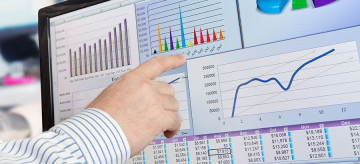- Advertising
- Bare Metal
- Bare Metal Cloud
- Benchmarks
- Big Data Benchmarks
- Big Data Experts Interviews
- Big Data Technologies
- Big Data Use Cases
- Big Data Week
- Cloud
- Data Lake as a Service
- Databases
- Dedicated Servers
- Disaster Recovery
- Features
- Fun
- GoTech World
- Hadoop
- Healthcare
- Industry Standards
- Insurance
- Linux
- News
- NoSQL
- Online Retail
- People of Bigstep
- Performance for Big Data Apps
- Press
- Press Corner
- Security
- Tech Trends
- Tutorial
- What is Big Data
Making Practical Use of Big Data
Big Data has almost unlimited use cases, especially if combined with machine learning. We review some of them so that you can paint a practical picture of what big data can do for you.
Using and processing data is now cheap, and the benefits are high. Let’s dive into some use cases, but please take note that these examples only scratch the surface of the potential uses of big data.
.jpg)
Big Data has almost unlimited use cases, especially if combined with machine learning. We review some of them so that you can paint a practical picture of what big data can do for you.
Using and processing data is now cheap, and the benefits are high. Let’s dive into some use cases, but please take note that these examples only scratch the surface of the potential uses of big data.
Optimize Prices in Brick & Mortar Retailing
One of the most underused big data information is receipt information of the brick and mortar stores. Just by looking at the receipts, you can figure out pricing and even pricing errors: a specific product kept dropping in sales in a supermarket chain, so they studied the receipts and realized there was a pricing error that accounted for that drop in sales, they fixed it, and sales grew back to previous levels.
By using receipt information you can also predict when you run out of stock of a particular item, and therefore adjust orders so that items never run out of stock. You can even use machine learning to make these predictions in real-time.
Create Better Omnichannel Experiences
Oasis Clothing from the UK is one good omnichannel example for retail. Whether you shop online or in store, Oasis knows who you are, what you like and what you buy. Everything is recorded to make a profile of each customer. Every one of their employees has an iPad, so if you go to one of their stores and they do not have your size for an item you like, then they will register an order for your item and send it directly to your home, only by knowing your ID with Oasis. This turns live shopping from frustrating to enjoyable.
The backbone of true omnichannel is big data because data is being collected for each customer in your brick and mortar shop, your online shop, your VR shop, your self-checkout shop, your mobile app or any other interaction with your products. That data needs to be sorted, processed, analyzed before it can turn into useful insight.
Get Insight from Tweets or Posts
You can use big data to process tweets, Instagram or Facebook posts. People share their needs and interests online, and they do this publicly most of the time. If you have a lot of followers or likes on your social media accounts maybe it is time you use that information to better design your products or find out the real value of a social media campaign.
If your presence in social media is not that good, you can use other companies’ social media feed or follow specific hashtags, collect that data and get useful insights.
Improve Your Supply Chain Management
Big data can help you manage things internally, including personnel. Let’s say one of your stores is performing worse than other stores. You can compare data you gather from yourself and maybe other companies and know if the fault lies in the area where the shop is located, the store manager or maybe other factors.
All you need to do is collect data from HR, from shop operations, from customers, and then adapt products and management to the specific area the shop is located in.
Get Better Shipping Prices
UberRush is one example where the use of big data and IoT devices works well in transportation. UberRush uses the same platform as Uber so that clients can ship products from point A to point B. This makes transportation cheaper at times and also provides a fast delivery, while a shipment company takes its time to pick up the product and deliver it within the same city.
Again, big data is the backbone of UberRush, because it needs to collect data from each car and then match clients and drivers as efficiently as possible. This system is only customer to customer at the time, but in time it can be adapted to ship products for companies as well. This is called a gig economy, and given its multiple individual contractor more decentralized nature, a service like “Uber Truck” may become the best cost-effective way to ship merchandise.
Prevent Machinery Malfunction
Let’s say you have some expensive machinery in your factory, and if one machine breaks down, your production halts until that machine is repaired. You can imagine the loss in productivity when that scenario happens.
You can use IOT devices connected to the machine, collect the data, then process it real-time with a machine learning diagnosis algorithm and it tells you in due time which component of a machine is going to break, so that you are prepared, order the spare parts and repair it before it breaks down. Goldcorp has done this to stop their hauling vehicles from breaking down, as it cost them 2 million a day in lost productivity when machines broke down.
Conclusion
The worst decision you can make is to ignore that data can provide you with useful business insights.
Readers also enjoyed:

2 Insanely Clever Tips & Tricks for Running Spark on Hadoop

Leave a Reply
Your email address will not be published.